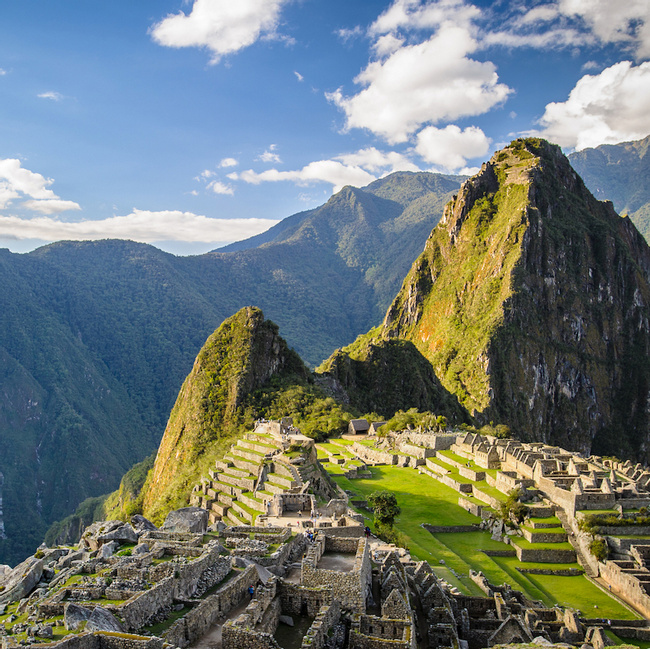- Travel Guides
The Geography of Peru
Peru’s land territory is about three times as large as California. Within it are a huge variety of topographical features and ecosystems, including massive mountains, lush jungles, and arid deserts.


The Geography of Peru
Aside from the Himalayas, the Andes are the highest mountain chain on earth. They run down the center of the country, separating arid coastal deserts from the Amazon Basin. The tallest mountain in Peru is Huascarán — at 22,205 feet (6,768 m), it is the highest tropical mountain in the world. The Peruvian Andes are separated into different mountain ranges, which sometimes run parallel to each other.
The Amazon Basin is east of the Andes. Streams tumble from the mountains and eventually merge into huge, muddy rivers that flow through lowland rainforest. The Amazon hosts an enormous assortment of ecosystems and supports an astounding array of life. The Amazon Jungle is the largest jungle on Earth and covers about 60 percent of all of Peru’s territory.
The Amazon may be wet, but the Peruvian coast is dry, which is just one example of the country's varied and complex weather systems. The "best time to visit Peru" is always highly dependent upon which region you intend to visit. The arid coastal region is largely a result of the Humboldt Current, which draws moisture away from the land. The current does, however, bring massive amounts of plankton to coastal areas, which in turn attract all kinds of fish and other marine predators. These fertile fishing grounds helped establish ancient coastal cultures in Peru.
Peru’s climatic zones are largely a result of altitude. In less than 600 miles (950 km), you can go from sea level to 13,000 feet (4,000 m). Not surprisingly, this quick shift in altitude creates all kinds of microclimates that harbor unique ecosystems and important agricultural areas.
A significant amount of Peruvian agriculture occurs in fertile valleys between Andean mountain ranges. Set at elevations between 6,500 and 13,000 feet (2,000 and 4,000 m), these valleys produce nearly half of the food supply in Peru. The Inca cultivated crops – including fruits, vegetables, and grain – in these valleys using terraces and irrigation. The snowpack from the Andes provided a source of water year-round, much of it carried by ancient irrigation. Some of these irrigation canals are still in use today.
Another unique geographical feature of Peru is the altiplano. Set between Lake Titicaca and Cusco, these grasslands are found at elevations that range between 13,000–15,700 feet (4,000–4,800 m). They are pasturelands for alpacas, llamas, and camelids, a type of South American camel.
Peru's landscape is beautiful, but it is not the best country for a road-trip — especially if you are unfamiliar with the terrain. Lucky for you, we've compiled a helpful guide full of the many options you have for getting around Peru. Why not let someone else do the driving, and enjoy this country's beautiful scenery?
It's more than just having a good time or visiting beautiful places (although that's absolutely a part of it!), it's about being part of a unique experience that stays with you.



